Berbere (Ethiopian Spice Blend)
This post may contain affiliate links. See my disclosure policy.
Central to Ethiopian cuisine is Berbere, a fiery hot and fragrant spice blend bursting with flavor. Now you can make your own right at home with my authentic berbere recipe that will bring life, flavor, and some serious kick to your food!
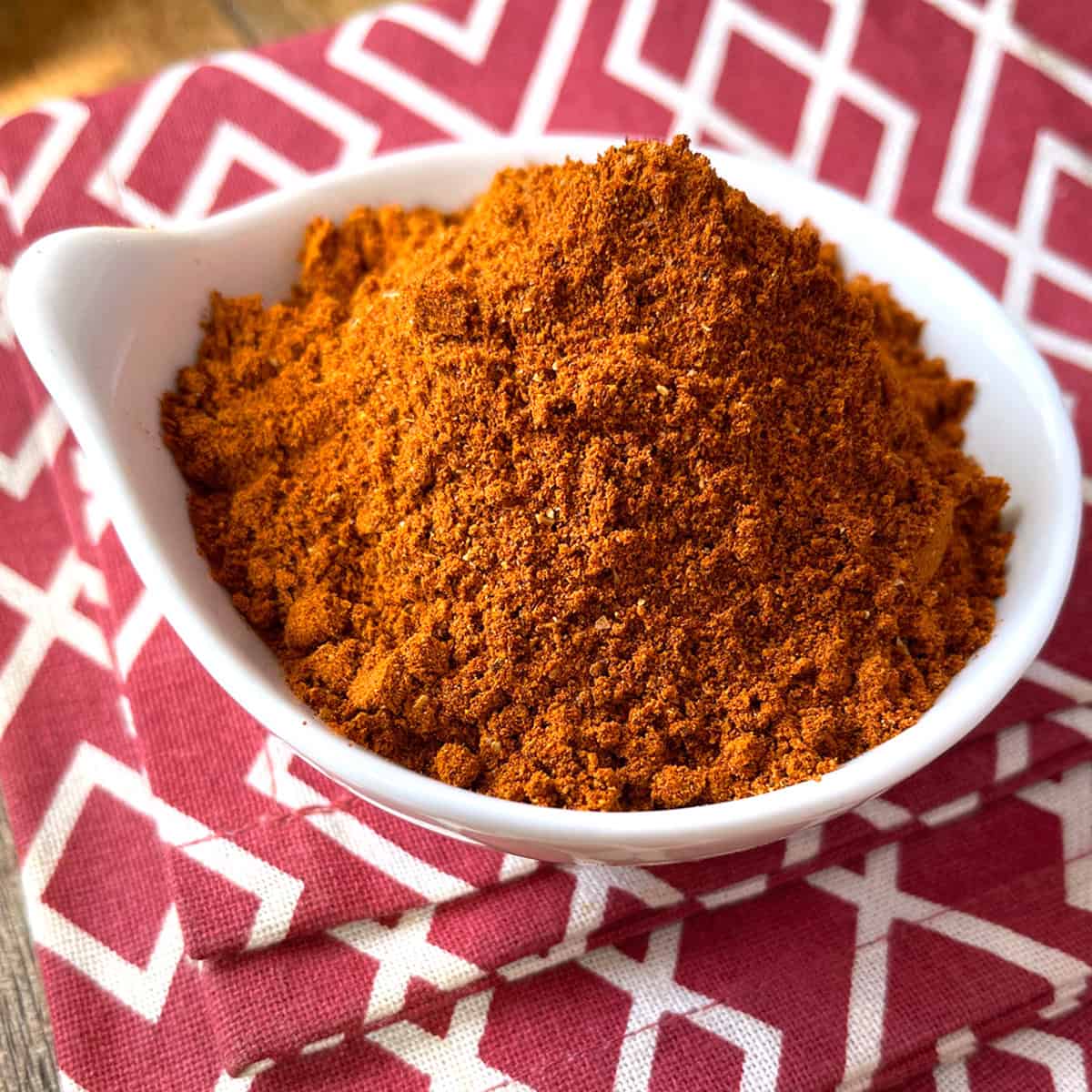
What is Berbere?
Berbere is a bold and fragrant spice blend known for its deep red color and complex flavor and is an integral ingredient in Ethiopian cuisine, most notably Doro Wat, the famous spicy chicken stew. It’s also known for its potent heat and this spice is not for the faint of heart – or taste buds. Every Ethiopian cook has their own version of this blend. Some versions include lesser known spices like nigella seeds, ajwain, and korarima, a spice that grows wild in Ethiopia. Whatever the version, there are several key spices that are common to all and the result is a fiery, bright red, highly aromatic and flavorful seasoning blend. It’s fantastic as a rub for meat, poultry and fish, a seasoning for stews, soups, grains and vegetables (see below for recommendations). Berbere makes a wonderful all-purpose seasoning.
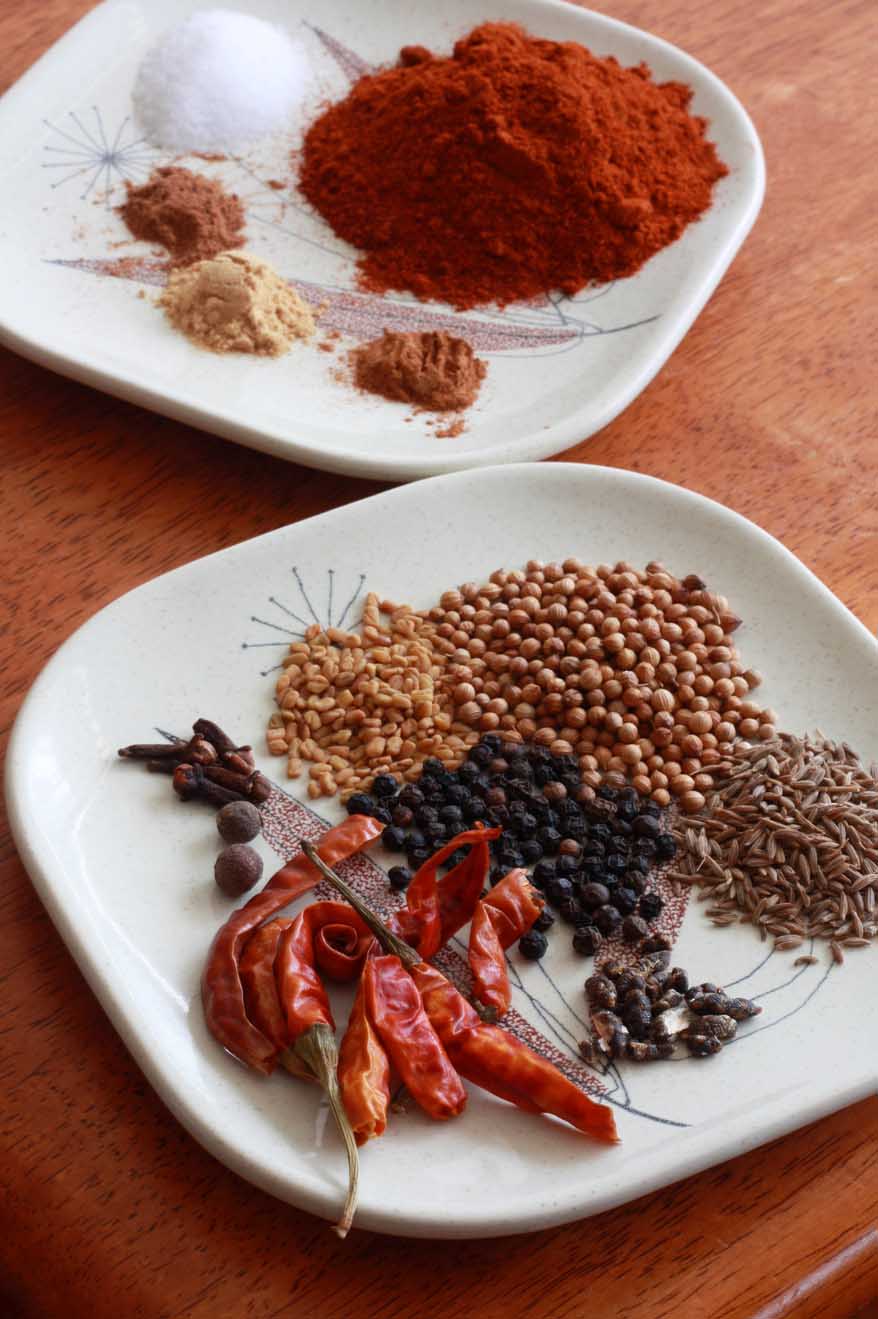
Berbere Ingredients
Berbere is made up of several spices and I strongly recommend using whole spices wherever and whenever possible. The whole spices are toasted, cooled and ground, yielding maximum flavor. If you already have these spices in ground form and don’t want to purchase the whole spices, you can substitute pre-ground. To make berbere you’ll need a combination of pre-ground spices and whole spices that you’ll toast and grind.
For the whole spices you will need:
- Coriander Seeds
- Cumin Seeds
- Green Cardamom Seeds
- Dried Red Chili Peppers
- Whole Allspice Berries
- Whole Cloves
- Fenugreek Seeds
- Black Peppercorns
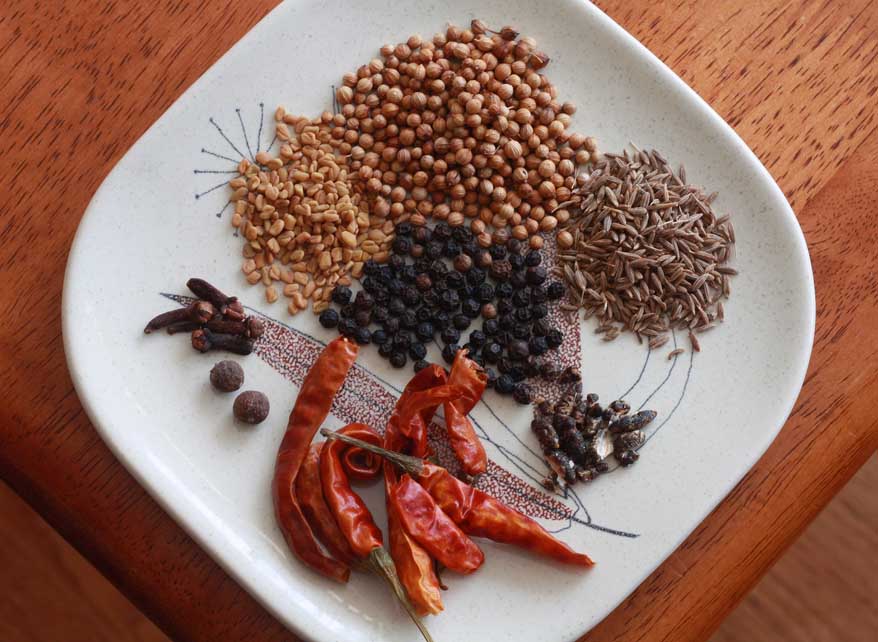
For the ground spices you will need:
- Sweet Paprika
- Ground Cinnamon
- Ground Ginger
- Ground Turmeric
- Ground Nutmeg
- Kosher Salt
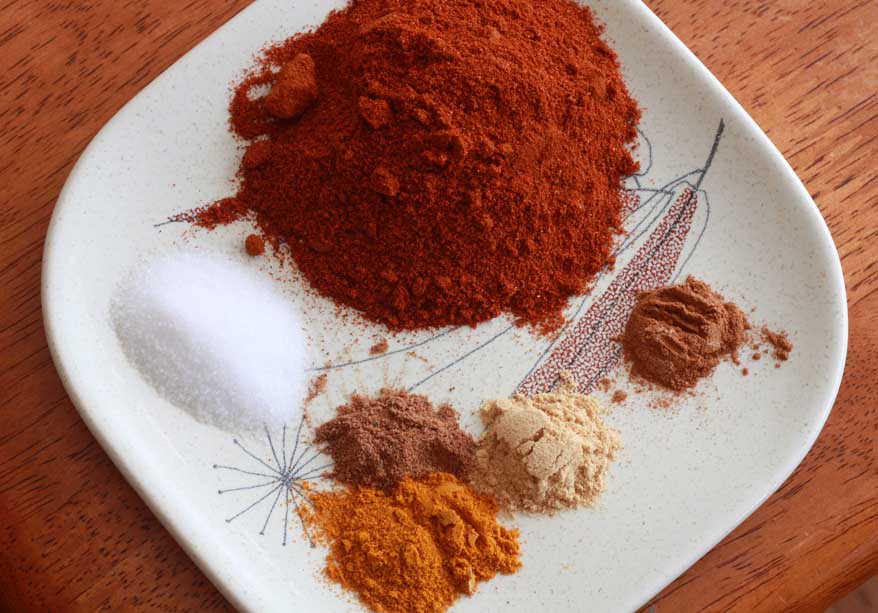
Berbere Recipe
Let’s get started!
First, we’re going to toast the whole spices and red chilies. This releases their natural oils, flavor and aroma. Heat a skillet over high heat and toast the seeds until very fragrant, about 3 minutes. Shake regularly to prevent scorching. Transfer them to a bowl to cool completely.
Note: If you aren’t afraid of extreme heat, leave the membranes and a few of the seeds in while de-seeding the chilies.
Once cooled, grind the whole spices in a spice or coffee grinder.
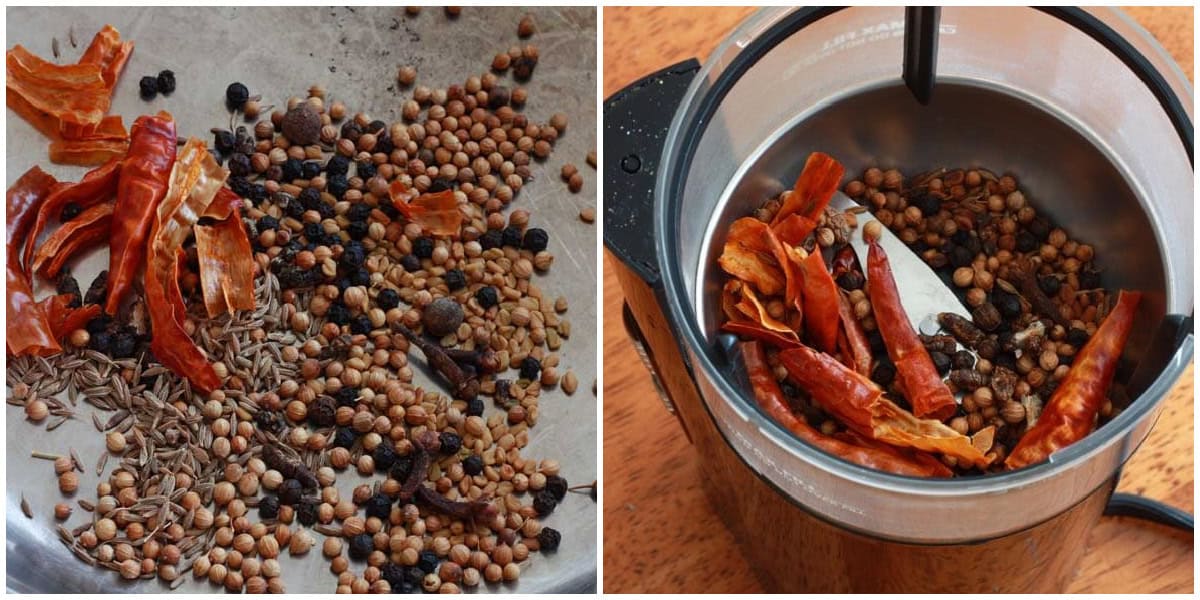
Next, add the powdered spices to the spice/coffee grinder.
Grind all the spices to a powder.
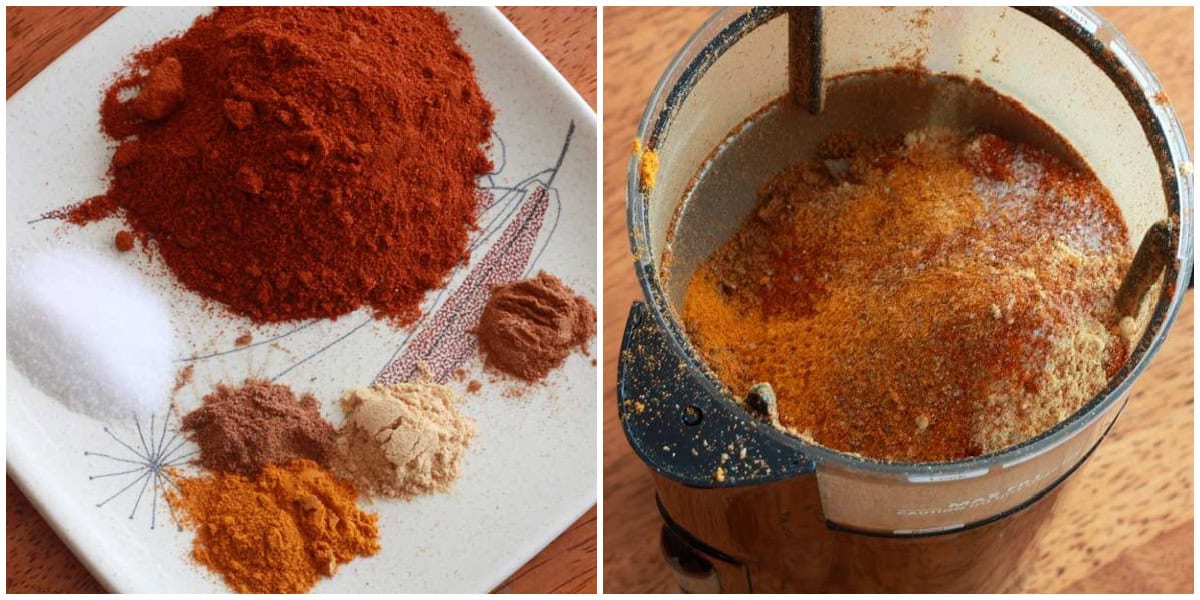
Transfer the blend to a jar with a lid.
Store the Berbere in an airtight jar in a dark, cool place until ready to use. This will keep for several months for maximum flavor use it within 3 months.
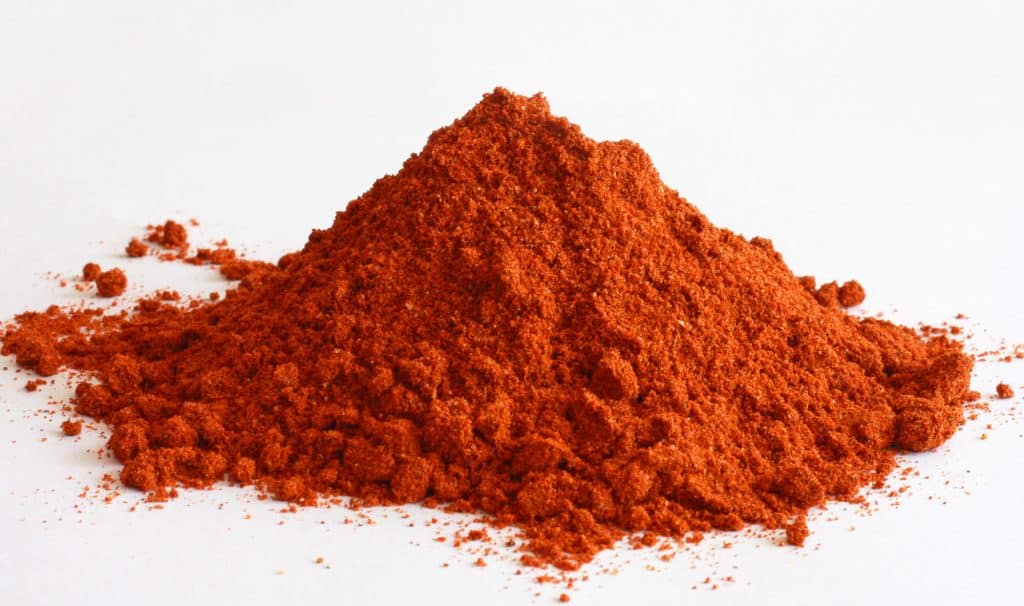
How to Use It
Berbere is a flavorful and fragrant spice blend that can be used in a variety of dishes. Remember, this seasoning blend is very potent and a little goes along way, so start with less and add as desired. Here are just a few ways you can use it:
- Stews and Curries: It’s most famously used in Ethiopian Doro Wat and Sega Wat. It can be used in a variety of stews to give them a flavor boost and some spicy kick.
- Lentils and Beans: Whether lentil or bean soups or salads, berbere really brings legumes to life. It’s classically used in Ethiopia’s famous lentil dish, Misir Wat.
- Vegetables: Just a pinch of it over roasted, grilled or steamed vegetables adds flavor and color.
- Grains: Stir into rice, quinoa or couscous to infuse them with flavor.
- Meat Rub or Marinade: Use it as a dry rub on meats, seafood or poultry before grilling, or combine it with some oil or yogurt to rub onto the meat before cooking.
- Scrambled Eggs and Avocado Toast: It adds the perfect kick and flavor.
- Compound Butter: Like Ethiopia’s famous Niter Kibbeh, Berbere can be added to melted butter and poured into a mold to make a spicy and flavorful compound butter that’s delicious on steaks, poultry, seafood, and vegetables.
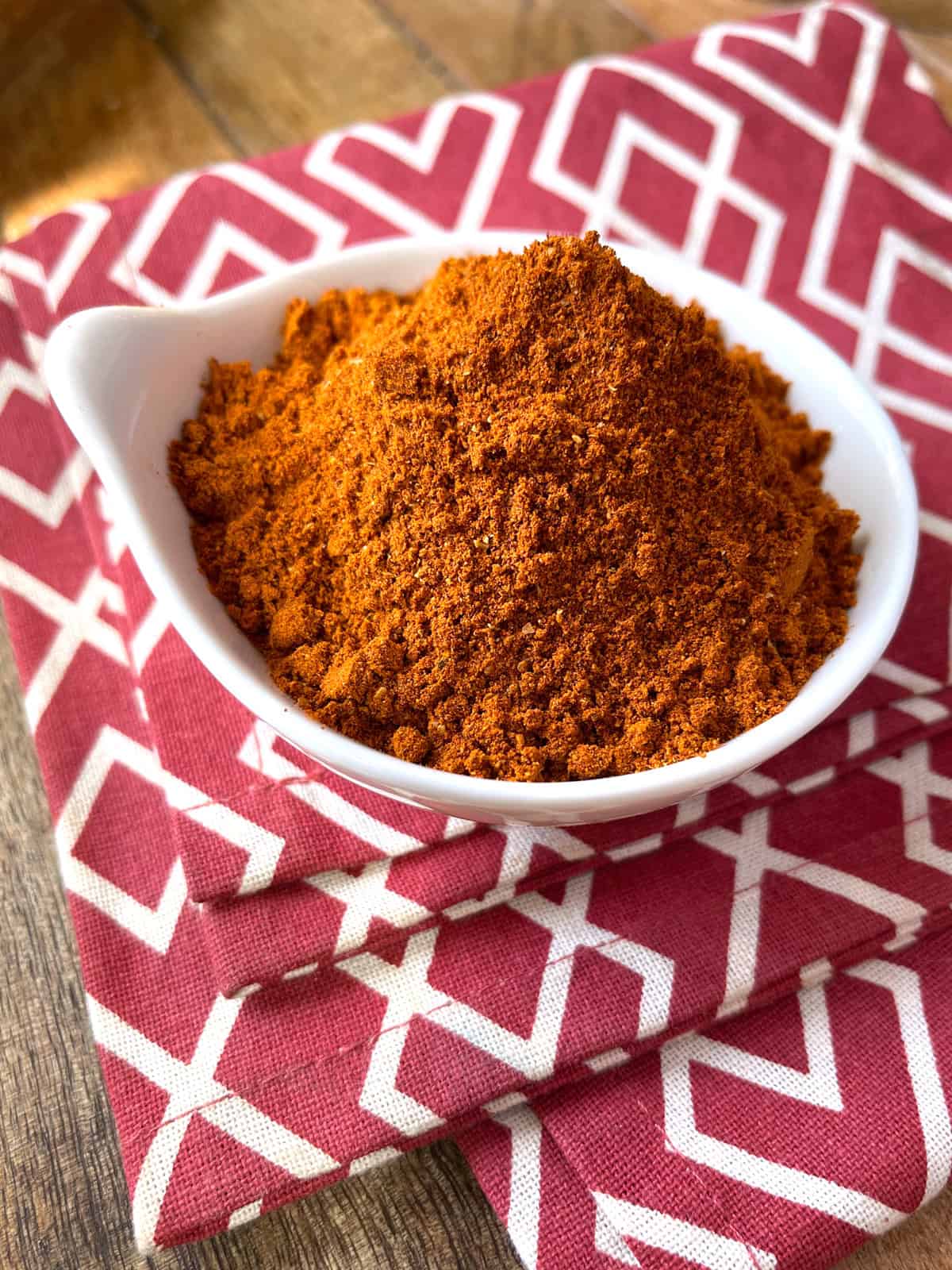
For more delicious seasoning blends from around the world to try my:
Save This Recipe
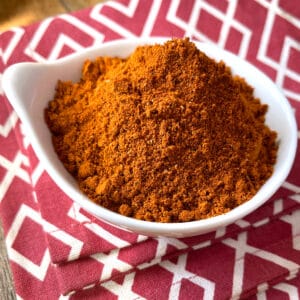
Berbere (Ethiopian Spice Blend)
Equipment
Ingredients
- 2 teaspoons coriander seeds
- 1 teaspoon cumin seeds
- 1/2 teaspoon fenugreek seeds
- 1 teaspoon black peppercorns
- 2 whole allspice berries
- Seeds of 4 green cardamom pods
- 4 cloves
- 5 dried red chilies , seeds and membranes removed and broken into small pieces (see Note)
- 3 tablespoons sweet paprika
- 1 teaspoon turmeric
- 1 teaspoon kosher or sea salt
- 1/2 teaspoon ground ginger
- 1/4 teaspoon nutmeg
- 1/4 teaspoon cinnamon
Instructions
- In a heavy skillet over high heat, toast the whole spices (seeds) and chilies, shaking the pan regularly to prevent scorching, until very fragrant, about 3 minutes. Transfer to a bowl and let cool completely.
- Grind the cooled spices in a spice or coffee grinder. Add all remaining ground spices and salt and grind everything together.Store in an airtight container in a dark, cool place. Will keep for up to 3 months.
Notes
Nutrition
Originally published on The Daring Gourmet August 26, 2013
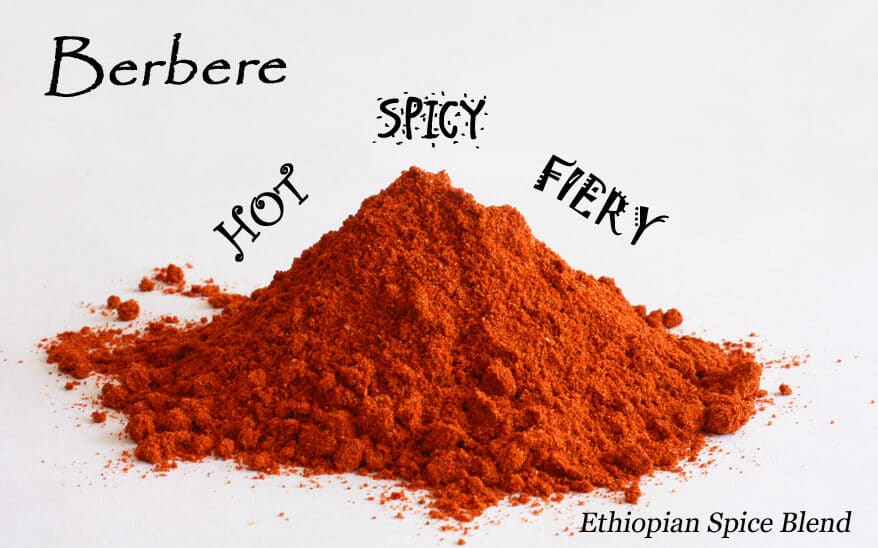



















Hello,
I was hoping you could tell me which chiles are best for this. Would chile de arbol work?
Thanks!
Hi Talia, the chiles in the store are generally just labeled as “dried red chiles” and can refer to any number of dried hot red chiles. Yes, arbol chiles will work great for this spicy hot blend.
Thank you Kimberly! You have catapulted me back to my childhood in my birthplace of Addis, where my beloved Ethiopian Nanny Bouzounesh used to make the berberé for the household . . .she didn’t trust the market place vendors!!
The name Bouzounesh translates to ‘You are plentiful’ . . .and that she was . . .my Guardian Angel Nanny, who taught me to speak Amarigna . . .80 years later, in far away Australia, I still speak Amarigna, but only to myself . . nobody to talk to where we are!
Many blessings for the lovely information Kimberley, and for bringing back so many beautiful memories!
stay well
Claudette
What treasured experiences and memories those must be for you, Claudette, thank you for sharing and happy cooking! :)
Hi Kimberly,
I just wanted to confirm. You used green cardamom pods for the Berbere but black for the Niter Kibbeh?
Do you think it would be ok to use the Black cardamom for the Berbere too?
Hi Natalie, they have very different flavor profiles but if you don’t have green cardamom for the berbere you can use some black cardamom in it. I’d use 3 pods instead of 4 because the black ones tend to be larger.
I have been looking around for almost a year and finally found what I want. Thank you so much for sharing the India and Ethiopia original’s.
You’re welcome, Diana, I’m so glad you enjoyed them, thank you! :)
Thank you! Good recipe, lovely smells. I tripled the recipe for sufficient quantity. Not a bad idea to mention to the household before hand that you’ll be toasting chilis. Lol.
Thanks again.
I have nigella and ajwain seeds in my cabinet. Should I toast those as well if I try adding them to the mix?
Hi Rosemary, yes, I’d give those a quick toasting as well.
Awesome site. I love Ethiopian food, which I was introduced to when I lived in Toronto. Fortunately Winnipeg has an Ethiopian community as well, and I know I can purchase authentic berbere and injera. I haven’t been able to cook much for friends and family lately because of the pande. But once it passes, there will be an Ethiopian feast of epic proportions, using your recipes. I’ll let you know how that goes. Love your Indian recipes as well (quite possibly my favourite cuisine). Will definitely be trying them out. Cheers.
Thank you so much, Tim, I really appreciate the compliment!
Hello Kimberly,
I must say, I was really intrigued by your take on this nationally loved spice. Especially when some one like me who has lived his whole life in Ethiopia and has had the privilege and pleasure of enjoying such an amazing experience, it was heart warming, to say the least. Although I loved reading your understanding of it, and seeing all the responses you got from all your readers, I feel that I must inform you that some of the switches you made tend to give you the spice we call ‘MITMITA’ not ‘BERBERE’. Please do not take this the wrong way….I only mean to give you the right info seeing as you clearly enjoy what you do. if you would like to know the right ingredients and process to follow to achieve the vibrant aroma, color and heat that ‘BERBERE’ is known for, DM me on…..or email me at…. . I will be more than happy to answer any questions you might have.
P.S. Thankyou for sharing.
Hi Fassil, please feel free to share that info here.
Hi Kimberly…
Did you get a DM from Fassil with his
Berbere recipe? I’d love it if you could kindly share it for us to try out.
Thank you.
Hi Sav, no, he never sent it.
Berbere vs mitmita
Berbere recipe:
“Here’s Daniel Mesfin’s way of making it, from his book Exotic Ethiopian Cooking: 15 pounds of chili peppers, five pounds each of fresh garlic and fresh ginger root, two cups of chopped red onion, a pound of rue seed, a cup of basil, a quarter cup each of cloves, cinnamon and cardamom, a cup of nech azmud (white cumin or bishop’s weed, also called ajowan), one and a half cups of salt, and three cups of water. You blend most of the ingredients and let them sit for 12 hours, roast the cinnamon, salt, cardamom and cloves in a skillet, eventually mix them all together, and grind everything into a fine powder.Here’s Daniel Mesfin’s way of making it, from his book Exotic Ethiopian Cooking: 15 pounds of chili peppers, five pounds each of fresh garlic and fresh ginger root, two cups of chopped red onion, a pound of rue seed, a cup of basil, a quarter cup each of cloves, cinnamon and cardamom, a cup of nech azmud (white cumin or bishop’s weed, also called ajowan), one and a half cups of salt, and three cups of water. You blend most of the ingredients and let them sit for 12 hours, roast the cinnamon, salt, cardamom and cloves in a skillet, eventually mix them all together, and grind everything into a fine powder.”
Mitmita recipe:
Mitmita is a simpler spice to make yourself because it has fewer ingredients – as few as three, or perhaps as many as six. But of course, the recipe can change from chef to chef and culture to culture in Ethiopia.
For the simplest version of mitmita, just do what Daniel recommends in his cookbook: blend 10 pounds of serrano red peppers, one-quarter cup of cardamom, two tablespoons of cloves and a cup of salt (all dry powders).
Fassil — I second that request for your Berbere spice recipe. Do please share it if you can.
I would like to know, too! I bought a mix of Berbere seasoning from a tea and spice store and it was lovely. I really want more! The ingredients on the package are all things already in my spice cabinet, even though I might not have whole versions of some of them. I even have the optional nigella and ajwain seeds listed in this post.
Outstanding flavor! All the fresh spices and the variety of spices make for a very complex and satisfying flavor.
I’m so glad you enjoyed it, Cathy, thank you!
I’ve only seen one other person ask this, but I was also wondering what the quantities of the spices would be in their ground form. I have all of the spices except cardamom, but they’ve been ground.
Hi Jessica, I haven’t measured the pre-ground spices so at this point my guess would be probably be as good as yours. Perhaps one of our readers has made the conversion and can chime in.
8 tsp pure chili powder
5 tsp sweet paprika
1 Tbsp salt
1 tsp ground coriander
1/2 tsp ground ginger
3/8 tsp ground cardamom
3/8 tsp ground fenugreek
1/4 tsp nutmeg
1/4 tsp ground allspice
1/8 tsp ground cloves
I have all these spices in ground form. Could you give the quantities for the wholee spices in teaspoons (ground)?
Would it change the flavor drastically if I omitted the dried red chilies? I am very sensitive to spicy chili. Sweet paprika I can deal with.
Hi Alofa, no it won’t drastically change the flavor. The red chilies are primarily for heat so feel free to omit them.
lovely recipe i’m so excited to try this out *** as for the Indian Lady ** ethiopia and India have a history of trading ** and we shared back and forth spices and deep influences thanks so much
This spice mix is fantastic!!! it is just so spot-on delicious!! I think it is rare to find a recipe that nails a spice mix in such a balanced way! Thank you very much for this!
I’m so happy you enjoyed it, Meital, thank you!
I was born in Addis Ababa ( capitol of Ethiopia) and went to high school there. I’ve been looking for a good doro wat recipe for years but you can’t make a good eat without good Berbere and this is the first recipe for Berbere that looks right. I can’t wait to try it!
I agree, Steve! I hope you enjoy the berbere and in case you’re interested here is our recipe for a very traditional doro wat also: https://www.daringgourmet.com/doro-wat-spicy-ethiopian-chicken-stew/